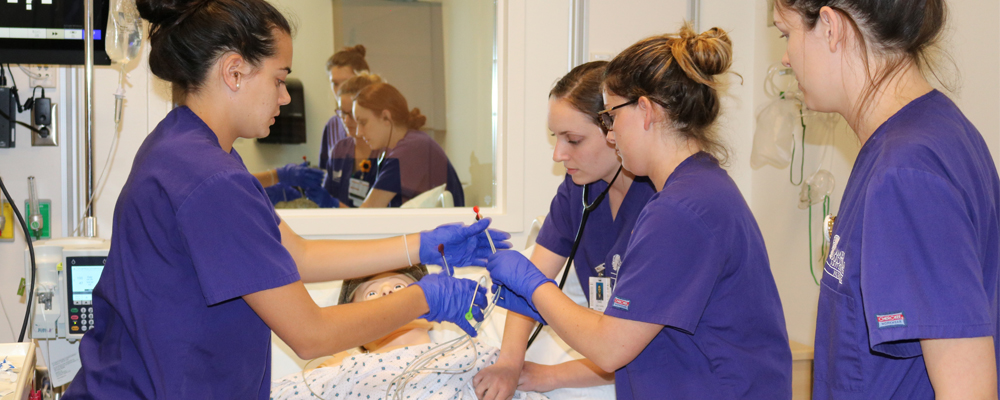
Labs
The Simulation Lab is a dynamic learning environment designed to mimic the acute care practice setting. Students engage with high fidelity manikins and standardized persons during simulation based learning experiences (SBLE’s). During an SBLE, students are given the opportunity to provide care in the same manner as they would in the offsite clinical setting. SBLE’s offer the realism of traditional clinical experience, yet students can make mistakes without compromising patient safety. Each simulation lab is equipped with a high fidelity simulator, fully functional hospitals beds and peripherals, workstations of wheels for documentation, and specialty supplies and inventory in order to care for patients across the lifespan.
The Skills Lab was designed as a space for students to gain mastery of foundational nursing skills and procedures. Within in the space you will find 20 patient care bays that resemble a nursing unit. Students observe, practice, and return demonstrate nursing care in the context of a multi-patient environment. Each bay contains a medium fidelity manikin, authentic healthcare equipment and inventory, and a computer station for simulated patient care documentation. Students spend one day per week in the first semester of the nursing program in the skills lab in order to gain competency in providing basic nursing care to patients in the clinical setting.
The Standardized Patient Suite is used for undergraduate and graduate simulation experiences. The Suite has 4 exam rooms, which are designed to replicate a realistic primary care practice settings. Standardized Patients, or actors playing the role of patients, are trained to provide a realistic experience for the students. Both undergraduate and graduate nursing students are able to practice patient interview and physical assessment skills, as well as techniques for establishing rapport with the patient. Graduate nursing students also utilize the space for encounters with simulated chronically ill patients by practicing the interview process, data collection, history taking to determine health status, present illness, and medical history.

